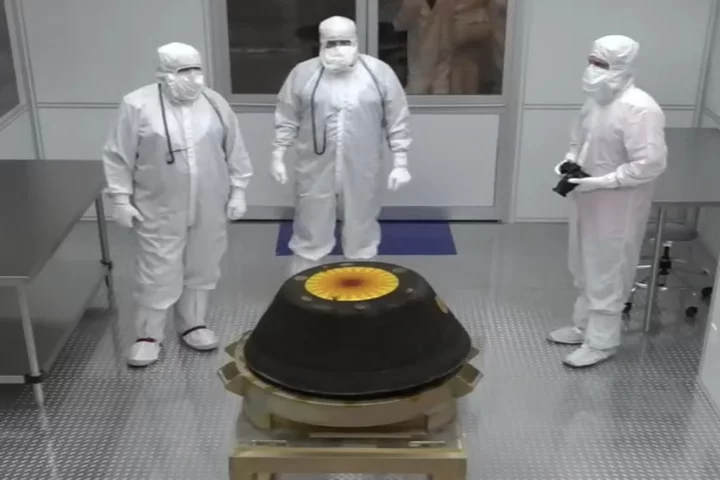
Nasa has gathered a large piece of a distant asteroid. What now?
Scientists have gathered a significant chunk of a distant asteroid, which has made its way to Earth after a mission taking millions of miles. But the really useful work will begin now. Nasa’s Osiris-Rex mission flew to the distant Asteroid Bennu, scooped up a piece of the object into a canister, and then flew back to Earth to drop it off. On Sunday, Nasa picked up that canister in the Utah desert and is now working to secure it. It will then send those samples to a variety of scientists around the world, with a chunk of it being sent to more than 200 people at 38 different institutions across the world. They hope that they can use them as a “time capsule” to peer into the early universe, telling us about where we came from. “This box when it is opened of material from the surface of Bennu can tell us untold secrets of the origins of the universe, the origins of our planet and the origins of life itself,” said Queen musician Brian May, who helped with the research by mapping out the asteroid to find a landing spot. “What an incredibly exciting day.” Sample return missions are particularly exciting to scientists because they offer a look at a pristine piece of a distant world that has been undisturbed by the environment on Earth. While some pieces of asteroids and other objects can fall down to Earth, they have to make their way through the atmosphere and can be damaged and changed in the process. They also mean that researchers are able to use all of the Earth’s latest technology to study the sample. Other pieces of distant worlds have of course been studied by spacecraft and landers, but they are only able to do so with the limited instruments they take to those planets. Another advantage of sample return missions over studying the objects at their home is that scientists can look back at those samples with new sensors and equipment invented long after the sample was actually taken. Many space missions continue for years – Curiosity is still examining Mars after arriving there in 2012, and the Voyager probes are still providing information almost 50 years after they were launched – but they are only able to do so with the technology that was available when they set off. The analysis done in sample return missions really begins when the spacecraft arrives at its target: then, it starts looking at the context of the sample, gathering information about the world from which it came that should prove useful to scientists later. Osiris-Rex arrived at Bennu in 2018, and spent two years mapping the asteroid before it set off back home with its delivery. All of that information in addition to the samples could help answer a variety of questions about our planet, scientists hope. “The asteroids in our solar system contain the raw building blocks from which the Earth was made, so working out their composition will tell us a lot of how our planet formed,” said Boris Gansicke from the department of physics at the University of Warwick. “There are many open questions, for instance, where did the water that we have on Earth come from? And where did the ingredients that made life possible to develop come from? “To answer those questions, ie measure the composition of an asteroid, you need to get your ‘hands’ on them (or in this case the arm of a space mission), and this is what Osiris-Rex achieved. “In a nutshell, it’s similar to sitting in front of a delicious dinner and wanting to have the list of ingredients.” Sample return missions are almost as old as space travel itself, and the first of them were the early Apollo missions, which brought back pieces of the Moon. Those continue to be useful to scientists. Since then, as human travel into space has declined, most of the work has been done by robots. In the early 1970s, the Soviet Union’s Luna missions gathered pieces of the Moon and brought them back, and in 2020 Japan’s Hayabusa2 mission brought back pieces of the asteroid Ryugu. Scientists have high hopes for future missions: perhaps the most discussed is a mission to Mars, which would bring back the first ever pieces of that planet. Engineers have suggested that for decades, and a number of plans have been formed, but none are likely to launch any time soon. Read More Nasa spots shocking number of galaxies like our own Nasa lands Bennu asteroid samples back on Earth Nasa just delivered a piece of a distant asteroid to Earth Pieces of a distant asteroid are about to fall to Earth Nasa to return largest asteroid sample ever as UK helps with research Massive solar flare strikes Nasa spacecraft sent to study Sun
1970-01-01 08:00
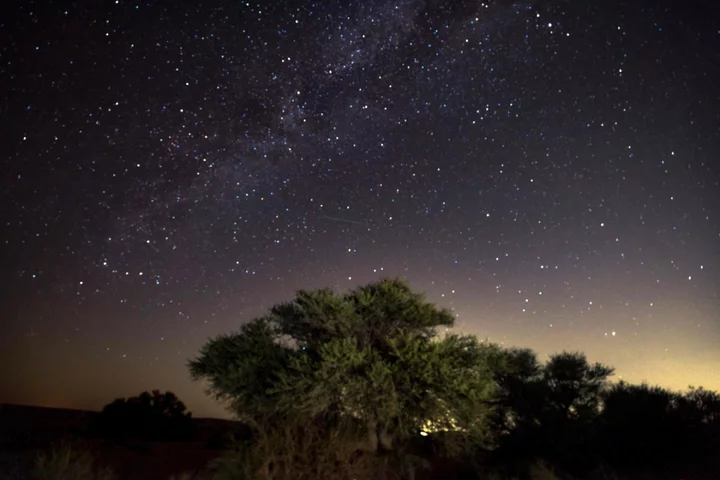
Nasa spots shocking number of galaxies like our own in early universe
Scientists have spotted a shocking number of galaxies like our own in the early universe. The finding will prompt us to entirely rethink our understanding of how the universe formed the structures that surround us. Looking deep into space, scientists found that the galaxies we see in the early universe are much more like our own Milky Way than was thought possible. A team of international researchers including those at The University of Manchester and University of Victoria in Canada, used the James Webb Space Telescope (JWST) to discover that galaxies like the Milky Way are 10 times more common than what was believed based on previous observations with the Hubble Space Telescope. Many of these galaxies formed some 10 billion years ago or longer, going far back into the history of the universe. The Milky Way is a typical disk galaxy, with a shape similar to a pancake or compact disc, rotating about its centre and often containing spiral arms. These galaxies might be the kind where life can develop given the nature of their formation history, experts suggest. Astronomers previously considered these types of galaxies too fragile to exist in the early universe when galaxy mergers were more common, destroying what was thought to be their delicate shapes. Christopher Conselice, professor of extragalactic astronomy at The University of Manchester, said: “Using the Hubble Space Telescope we thought that disc galaxies were almost non-existent until the universe was about six billion years old, these new JWST results push the time these Milky Way-like galaxies form to almost the beginning of the universe.” He added: “These JWST results show that disc galaxies like our own Milky Way, are the most common type of galaxy in the universe. “This implies that most stars exist and form within these galaxies which is changing our complete understanding of how galaxy formation occurs. “These results also suggest important questions about dark matter in the early universe which we know very little about.” “Based on our results, astronomers must rethink our understanding of the formation of the first galaxies and how galaxy evolution occurred over the past 10 billion years.” The researchers say their findings, published in the Astrophysical Journal, completely overturn the existing understanding of how scientists think the universe evolves, and the scientists say new ideas need to be considered. Lead author Leonardo Ferreira, from the University of Victoria, said: “For over 30 years it was thought that these disc galaxies were rare in the early universe due to the common violent encounters that galaxies undergo. “The fact that JWST finds so many is another sign of the power of this instrument and that the structures of galaxies form earlier in the universe, much earlier in fact, than anyone had anticipated.” The improved technology of JWST allows astronomers to see the true structure of these galaxies for the first time. A paper describing the findings, ‘The JWST Hubble Sequence: The Rest-Frame Optical Evolution of Galaxy Structure at 1.5 The Astrophysical Journal. Additional reporting by agencies Read More Nasa just delivered a piece of a distant asteroid to Earth Nasa lands Bennu asteroid samples back on Earth Pieces of a distant asteroid are about to fall to Earth Nasa just delivered a piece of a distant asteroid to Earth Nasa lands Bennu asteroid samples back on Earth Pieces of a distant asteroid are about to fall to Earth
1970-01-01 08:00
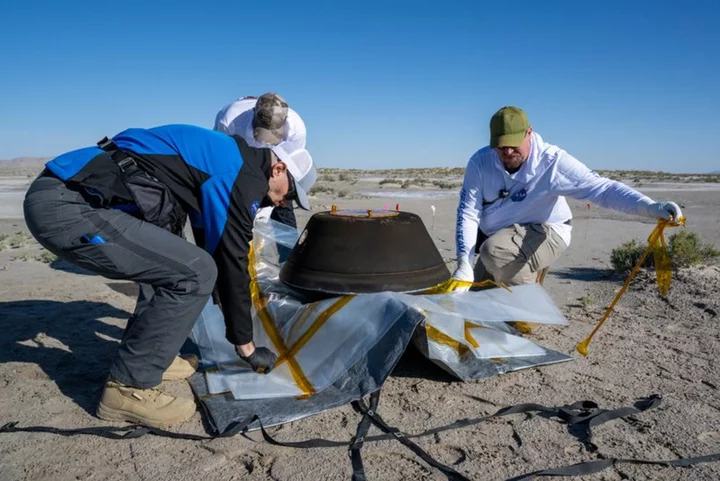
NASA's first asteroid sample parachutes into Utah desert
By Steve Gorman and Maria Caspani (Reuters) -A NASA space capsule carrying the largest soil sample ever scooped up from
1970-01-01 08:00
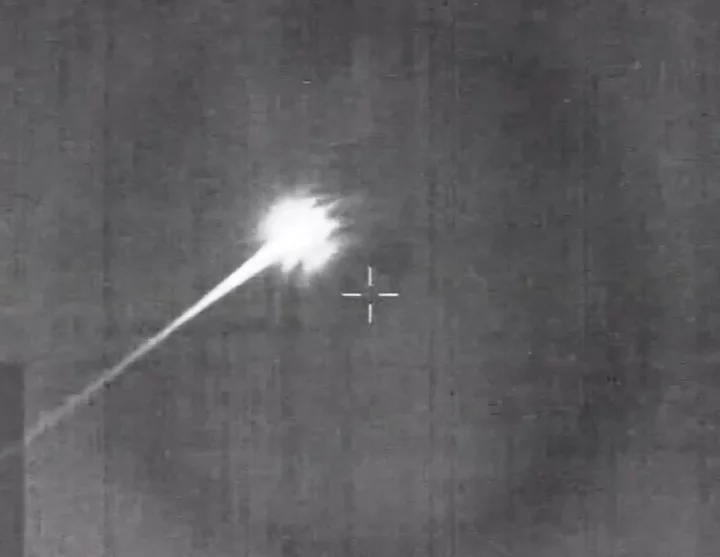
Pieces of distant, ancient asteroid arrive on Earth from Nasa spacecraft, after travelling billions of miles
A piece of asteroid has arrived on Earth from the other side of the solar system, in a major success for Nasa’s Osiris-Rex mission. The spacecraft has spent years flying to Asteroid Bennu, gathering up a piece of it, and bringing it back home so that it can be studied by researchers. It brings an end to a mission that took seven years, saw it travel 4 billion miles, and cost more than a billion dollars. Scientists hope that study can help reveal how planets formed and evolved, and might shed light on how life itself began. Since Bennu is around 4.5 billion years old, the sample is almost like a look back into the solar system during its early years and Nasa has referred to it as a “time capsule”. Asteroid Bennu is also notable as Nasa’s “most dangerous asteroid”, according to a scale used to measure how much of a hazard a given object poses. It is the first time that Nasa has brought back a piece of an asteroid, and the first time since 2020. It is also the biggest ever to be gathered, at around 250 grams. Nasa sent a team on board helicopters to gather the sample canister, extracting it to ensure that it did not become contaminated by the environment. Since the sample was directly from the asteroid, it will not have any trace of material from the Earth on it, unlike those that fall to Earth. That sample will be distributed between 200 people at 38 institutions across the world, including those in the UK. The Osiris-Rex mission left Earth in September 2016, and arrived at the asteroid in October 2018. It gathered samples in October 2020, and then left the asteroid in April 2021. Since then, both the sample and the spacecraft have been returning back from the other side of the solar system to Earth. The spacecraft then dropped off the sample to return home, while Osiris-Rex will carry on to study another asteroid called Apophis, where it will arrive in 2029. Apophis is also notable for its danger: at times, it has challenged Bennu at the top of the league table of most dangerous objects. But recent research has suggested that Apophis poses less of a danger. Ashley King, UKRI future leaders fellow, Natural History Museum, said: “Osiris-Rex spent over two years studying asteroid Bennu, finding evidence for organics and minerals chemically altered by water. “These are crucial ingredients for understanding the formation of planets like Earth, so we’re delighted to be among the first researchers to study samples returned from Bennu. ‘We think the Bennu samples might be similar in composition to the recent Winchcombe meteorite fall, but largely uncontaminated by the terrestrial environment and even more pristine.” Dr Sarah Crowther, research fellow in the Department of Earth and Environmental Sciences at the University of Manchester, said: “It is a real honour to be selected to be part of the Osiris-Rex sample analysis team, working with some of the best scientists around the world. “We’re excited to receive samples in the coming weeks and months, and to begin analysing them and see what secrets asteroid Bennu holds. “A lot of our research focuses on meteorites and we can learn a lot about the history of the solar system from them. “Meteorites get hot coming through Earth’s atmosphere and can sit on Earth for many years before they are found, so the local environment and weather can alter or even erase important information about their composition and history. “Sample return missions like Osiris-Rex are vitally important because the returned samples are pristine, we know exactly w Read More Pieces of a distant asteroid are about to fall to Earth Nasa to return largest asteroid sample ever as UK helps with research Astronomers find abundance of Milky Way-like galaxies in early universe Pieces of a distant asteroid are about to fall to Earth Nasa to return largest asteroid sample ever as UK helps with research Astronomers find abundance of Milky Way-like galaxies in early universe
1970-01-01 08:00
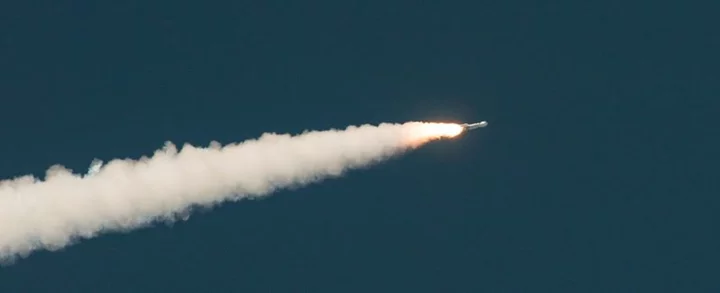
NASA's first asteroid sample on track for Sunday parachute landing in Utah
By Steve Gorman LOS ANGELES A NASA space capsule carrying a sample of rocky material plucked from the
1970-01-01 08:00
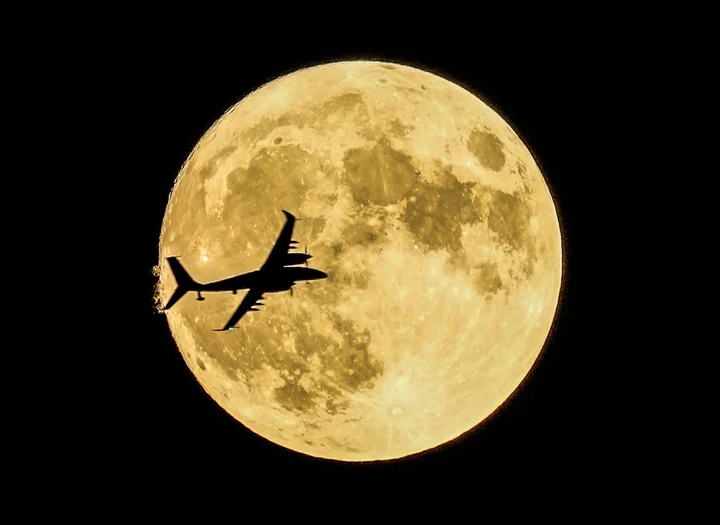
September Supermoon: When is it and how to view it?
The world is about to see the last Supermoon of the year. When the full Moon rises on 28 September, it will be bigger and perhaps brighter than usual, because it is relatively close to the Earth. Our nearest neighbour will be a mere 361,552km away. That compares with the average distance of 384,472km. Its relative proximity means that the Moon will appear larger and more clearly in the sky than usual, and can provide an exciting opportunity for people to get a good look at our satellite. Doing so is easier than with many other celestial phenomena: you can simply look up at the sky, and see whether you can spot the difference in the Moon’s size, though looking through telescopes or binoculars could provide a good look at its surface. It is best seen at Moonrise, when it begins to rise over the horizon. The other objects in front of it will help provide a sense of scale and can make the Moon look larger than normal. This month’s Moon is also known as the Harvest Moon, so named because it comes closest to the start of Autumn. As well as coming around harvest season, the bright reflections from the Moon can be a helpful way of working into the night. There is no formal definition of a Supermoon, and some astronomers have suggested that they are overhyped. What’s more, not all Supermoons are equal, and the lack of definition means that the word can be used for moons that are only slightly closer than normal. But they can bring significant increases in the amount of light that appears on Earth: Supermoons cast about 30 per cent more light than when the Moon is at its dimmest, according to the Natural History Museum. The museum’s planetary science researcher Sara Russell also noted that the Moon is actually moving slowly away from Earth. That means that what we call a Supermoon today was actually just the normal Moon a billion years ago. This year has been a busy one for fans of the Moon. Last month, for instance, also saw a supermoon – which also happened to collide with a Blue Moon, for the last time this decade. Read More MPs ask if Elon Musk ‘personally intervened’ on Russell Brand’s status on X Starship rocket launch window revealed by FAA India’s solar mission completes key manoeuvre, slingshots towards Sun
1970-01-01 08:00

Taylor Swift: Australia to host academic conference on pop icon
The event will explore the megastar's impact on culture and the music industry.
1970-01-01 08:00

South Korea raids US military bases in drugs probe
Some 17 soldiers and five other people allegedly smuggled or used synthetic marijuana via military mail.
1970-01-01 08:00
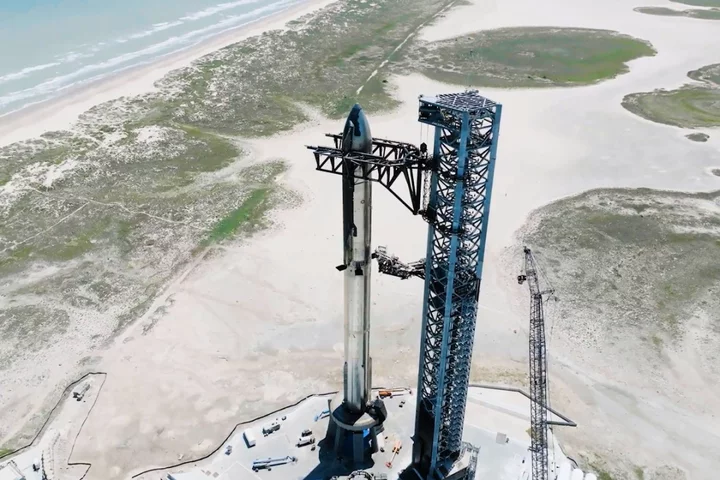
Starship rocket launch window revealed by FAA
Regulators have revealed when they expect to approve a launch license to SpaceX for the next major flight test of its Starship rocket. The head of the Federal Aviation Administration’s (FAA) commercial space division said a mishap investigation from the last test in April had been concluded and a license would likely be granted “somewhere in mid to late October”, assuming SpaceX make the necessary changes. Starship is the biggest rocket ever built, measuring 394 feet (120 metres) and capable of producing 5,000 metric tons of thrust, however it is yet to make it to orbit. An attempt on 20 April, 2023, saw it blow up just over three minutes into a 90 minute flight. The debris that came down in the Gulf of Mexico, as well as from the destroyed launchpad in Texas, became the subject of an FAA investigation. The federal agency said SpaceX would need to take 63 corrective actions before another launch license is approved. Kevin Coleman, the FAA’s associate administrator for commercial space transportation, told SpaceNews this week that 27 of the 63 corrective actions are related to public safety. “So one thing that we’ll need to see before the next operation is evidence that shows that the company has closed out the corrective actions that are specifically tied to public safety,” he said. “We’re on a pretty good schedule. It probably set us somewhere in mid to late October for conclusion of the safety review.” A separate environmental review from the US Fish and Wildlife Service is also required in order to comply with the Endangered Species Act, though Mr Coleman said he hoped it would be wrapped up by the time the safety review is complete. Earlier this month, SpaceX boss Elon Musk said Starship is “ready to launch” after it was pictured on the launchpad of the firm’s Starbase facility in Boca Chica, Texas. The tech billionaire plans to build hundreds of the rockets in order to establish a permanent human colony on Mars before 2050. SpaceX has already secured a multi-billion dollar contract with Nasa to develop the craft for use in the US space agency’s Artemis programme, which aims to return humans to the surface of the Moon this decade. Read More ‘It’s becoming like an airport’: How SpaceX normalised rocket launches Elon Musk makes prediction for imminent Starship launch SpaceX launch of Starship rocket on hold amid ‘mishap investigation’ India’s solar mission completes key manoeuvre, slingshots towards Sun
1970-01-01 08:00

Elon Musk woos world leaders, courting controversy
Foreign leaders visiting the US are more enthusiastic than ever to meet with the world's richest man.
1970-01-01 08:00

SpaceX says US case alleging anti-immigrant bias is unconstitutional
By Daniel Wiessner Elon Musk's SpaceX has sued the U.S. government saying that the government's administrative case accusing
1970-01-01 08:00
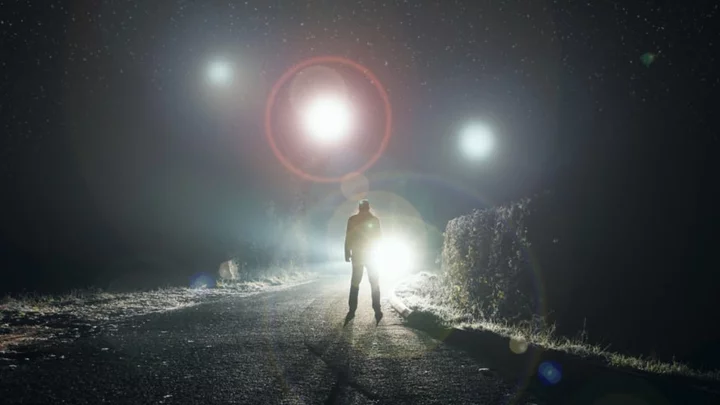
NASA Is Finally Looking Into UFOs
The space agency now has an official division for investigating reports of flying objects.
1970-01-01 08:00
